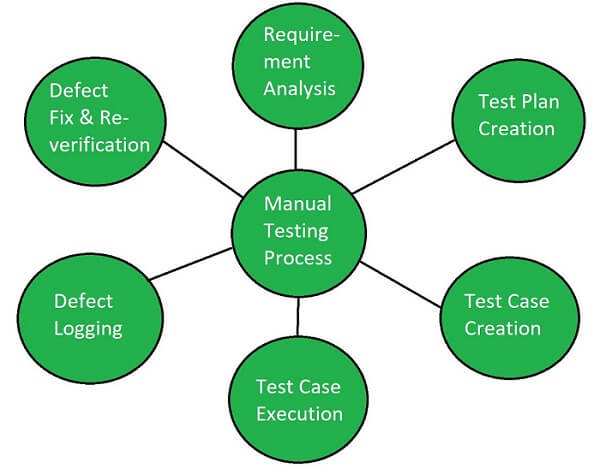Advantages and Disadvantages of Manual Testing
This article will help provide the pros and cons of manual testing. Before moving onto the main topic, First, let us understand manual testing in brief.
What is Manual Testing?
Manual testing is a type of software testing that involves human testers executing test cases to verify the functionality and quality of a software application. It is a process of identifying defects or bugs in the software by manually executing test cases without the use of automated tools. At several stages of the software development life cycle, including unit testing, integration testing, system testing, and acceptance testing, manual testing can be carried out.
In manual testing, testers develop and carry out test cases, record faults, and offer input on the usability, performance, and functionality of the software using their subject knowledge, experience, and creativity. To make sure the software complies with the requirements and specifications, testers imitate real-world scenarios and employ a variety of testing approaches, including exploratory testing, regression testing, and ad hoc testing.

Overall, manual testing is an essential part of software testing that provides a human touch to the software's quality and ensures that the end-users have a smooth and error-free experience.
Advantages of manual testing
Manual testing offers several advantages that make it an indispensable part of the software testing process. Here are some of the key advantages of manual testing:
- Human Intelligence: Manual testing requires human intelligence to develop test cases, identify faults, and judge the overall product quality. In order to test the program's usability, performance, and functionality, testers might make use of their domain knowledge, prior experience, and ingenuity.
- Adaptability: Manual testing is adaptable and can be utilized in a range of testing scenarios. Testers are able to modify test cases, as opposed to automated testing, which cannot be modified to meet changing software needs. Additionally, exploratory testing and ad-hoc testing, which are useful for identifying fresh problems and validating the user experience, can be done manually.
- Cost-Effective: Manual testing is cost-effective, especially for small-scale projects or when there is no clear understanding of the system requirements. Manual testing does not require any investment in expensive tools or automation frameworks, which can significantly reduce testing costs.
- Personal Touch: Manual testing gives the software's quality a personal touch. Automated testing is unable to capture tester comments on the software's usability, aesthetics, and user experience. This comments will help us enhance the software's functionality and guarantee a better user experience.
- Early Detection: Using manual testing, serious flaws in software can be found quickly. Human testers undertake manual testing, which allows them to find flaws that an automated test could have missed. By preventing expensive rework later in the development cycle, early defect discovery can reduce development cycle time and expense.
- Simplicity: Manual testing is uncomplicated and simple to comprehend. Anyone with a fundamental understanding of the software can perform manual testing; it does not call for any particular knowledge or training. Because of its ease of use, stakeholders and end users can easily be included in the testing process, which can raise the software's quality and user happiness.
In conclusion, manual testing has a number of benefits that make it a crucial step in the software testing process.
Top of Form
Disadvantages of manual testing
Manual testing has been the traditional method of software testing and is still in use in various organizations for its benefits. However, manual testing also has some disadvantages that can cause challenges in the software testing process. Here are some of the key disadvantages of manual testing:
- Time-consuming: Manual testing requires time since test cases must be executed manually. Complex software program testing could take some time. Testing teams might not have enough time to cover all test cases because of the delay in software development.
- Human Error: Human errors can happen when testing is done manually. By failing to test particular scenarios or by making mistakes when executing test cases, testers may come up with erroneous results. These mistakes can make it impossible to find flaws, which would affect the caliber of the software.
- Expensive: Manual testing can be expensive, particularly for big projects or when frequent releases are required. It can raise testing costs because it calls for a sizable amount of resources, such as employees, time, and equipment.
- Difficult to Measure: It is challenging to quantify the manual testing process since there are no objective metrics provided by manual testing to assess the software's quality. It is difficult to assess the efficiency of the testing process since it is difficult to keep track of the quantity of test cases executed, errors discovered, and test coverage attained.
In conclusion, manual testing has several disadvantages that can cause challenges in the software testing process. These disadvantages should be taken into consideration while designing the testing process and should be balanced with the benefits of manual testing.
|

 For Videos Join Our Youtube Channel: Join Now
For Videos Join Our Youtube Channel: Join Now










